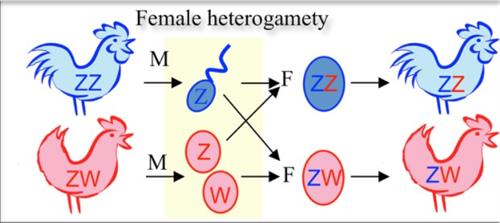PDF chapter test TRY NOW
XX-XO type:
Some insects like grasshoppers, cockroaches and roundworms have the XX-XO type of sex-determination system.

Heredity of sex chromosomes in XO sex determination
ZW-ZZ type:
In this type of sex determination, females are heterogametic, producing two types of gametes (Z and W), whereas males are homogametic, producing only one type of gametes (ZZ). This type of sex determination can be observed in birds as well as some reptiles.

Sex determination in birds
Z0-ZZ type:
Females have an odd sex chromosome (AA+Z) in the ZO-ZZ type of sex determination, whereas males have two homomorphic sex chromosomes (AA + ZZ). This type of sex determination can be observed in butterflies and moths.

Sex determination in butterfly
Important!
Organisms like wasps and bees have no sex chromosomes.
Reference:
https://www.genderinclusivebiology.com/newsletter/sex-determination-why-so-many-ways-of-doing-it
https://www.wikiwand.com/en/Sex-determination_system
https://www.slideserve.com/amos/factors-affecting-on-sex-reversal-of-fishes
